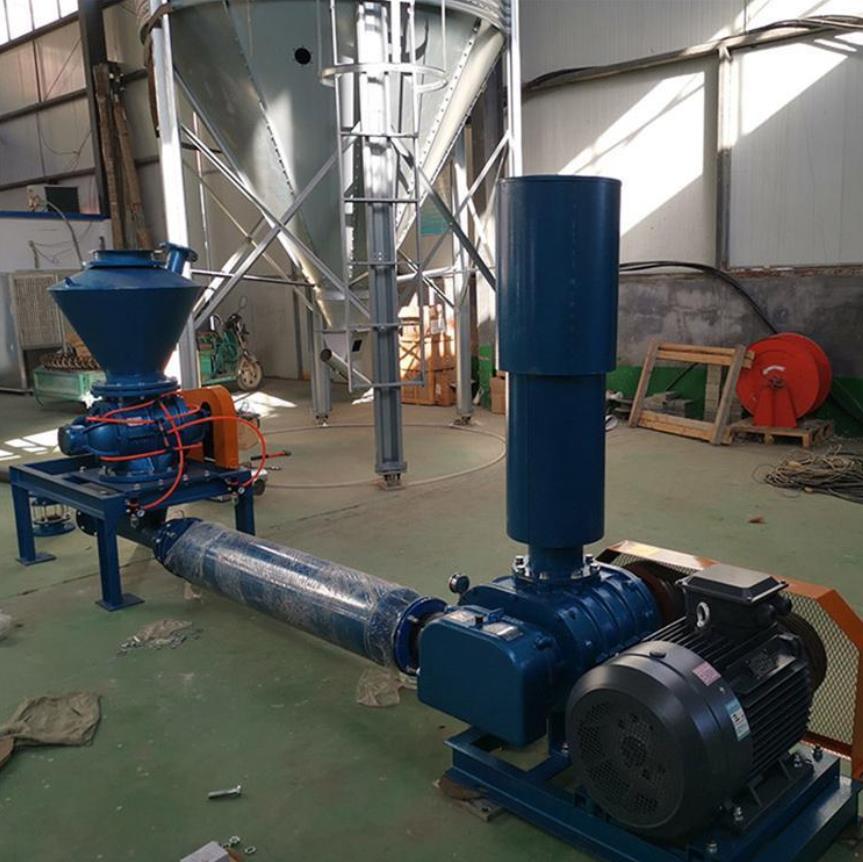Technical parameters and conveying process of Roots blower for sawdust pneumatic conveying line


The technical parameters and conveying process of the Roots blower in the sawdust pneumatic conveying line are key to ensuring the stable operation of the conveying system. The following is a detailed analysis of these two aspects:
1、 Technical parameters of Roots blower
The Roots blower plays the role of providing power source in the sawdust pneumatic conveying line, and its technical parameters mainly include the following aspects:
1. Airflow: Airflow refers to the actual amount of gas flowing into a Roots blower per unit time, commonly measured in m3/min. In sawdust pneumatic conveying, the size of the air volume directly determines the conveying capacity, so it is necessary to choose the appropriate air volume according to the actual conveying needs.
2. Wind pressure: Wind pressure refers to the gas pressure at the outlet of a fan, commonly measured in kPa or mmHg. In sawdust pneumatic conveying, the magnitude of wind pressure affects the gas flow rate and conveying distance, so it is necessary to determine the appropriate wind pressure based on factors such as the length, diameter, and sawdust density of the conveying pipeline.
3. Rotational speed: Rotational speed refers to the number of revolutions of the active shaft of a Roots blower per unit time, commonly measured in r/min. The speed directly affects the air volume and pressure of the fan, so when choosing a Roots blower, the appropriate speed needs to be determined based on the actual conveying requirements.
4. Shaft power: Shaft power refers to the power transmitted from the prime mover to the main shaft of a Roots blower per unit time under flow and head conditions. The size of the shaft power determines the energy consumption and efficiency of the fan, so when choosing a Roots blower, attention should be paid to its shaft power indicators to ensure energy conservation and consumption reduction while meeting the conveying needs.
5. Exhaust temperature: Exhaust temperature refers to the temperature of the gas at the outlet of the Roots blower. In sawdust pneumatic conveying, the high or low exhaust temperature will affect the stability and performance of the conveying system, so it is necessary to choose a suitable Roots blower to ensure that the exhaust temperature is within a reasonable range.
2、 Transportation process
The conveying process of sawdust pneumatic conveying line mainly includes the following aspects:
1. Mixing ratio: Mixing ratio refers to the ratio of sawdust mass to air mass transmitted per unit time. In sawdust pneumatic conveying, the size of the mixing ratio directly affects the conveying efficiency and energy consumption. Generally speaking, the larger the mixing ratio, the lower the air consumption and power consumption; But when the mixing ratio is too high, the concentration of materials in the conveying pipe increases, the pressure loss of the system increases, and the risk of blockage also increases. Therefore, when determining the mixing ratio, it is necessary to comprehensively consider factors such as transportation distance, pipeline layout, and sawdust density.
2. Wind speed: Wind speed refers to the flow rate of gas inside the conveying pipeline. In sawdust pneumatic conveying, the magnitude of wind speed directly affects the conveying capacity and efficiency. Generally speaking, the higher the wind speed, the stronger the conveying capacity; But when the wind speed is too high, it will increase power consumption and pipeline wear, and may also cause sawdust particles to break. Therefore, when selecting wind speed, it is necessary to comprehensively consider factors such as transportation demand, pipeline material, and wear and tear.
3. Pipeline layout: Pipeline layout refers to the direction and arrangement of the conveying pipeline. In sawdust pneumatic conveying, pipeline layout needs to consider factors such as conveying distance, terrain conditions, and conveying efficiency. Reasonable pipeline layout can reduce transportation resistance, improve transportation efficiency, and reduce energy consumption. At the same time, attention should be paid to the sealing and wear resistance of the pipeline to ensure the stability and performance of the conveying system.
4. Separation and dust removal: At the end of the sawdust pneumatic conveying line, sawdust and air need to be separated, and the gas needs to be treated with dust removal. This can be achieved by setting up separators and dust collectors. Separators can separate sawdust from the air, while dust collectors can remove dust and impurities from the gas to ensure the quality of the emitted gas.
In summary, the technical parameters and conveying process of Roots blowers are two indispensable aspects of sawdust pneumatic conveying lines. By reasonably selecting the technical parameters of the Roots blower and optimizing the conveying process, stable and efficient pneumatic conveying of sawdust can be achieved.





